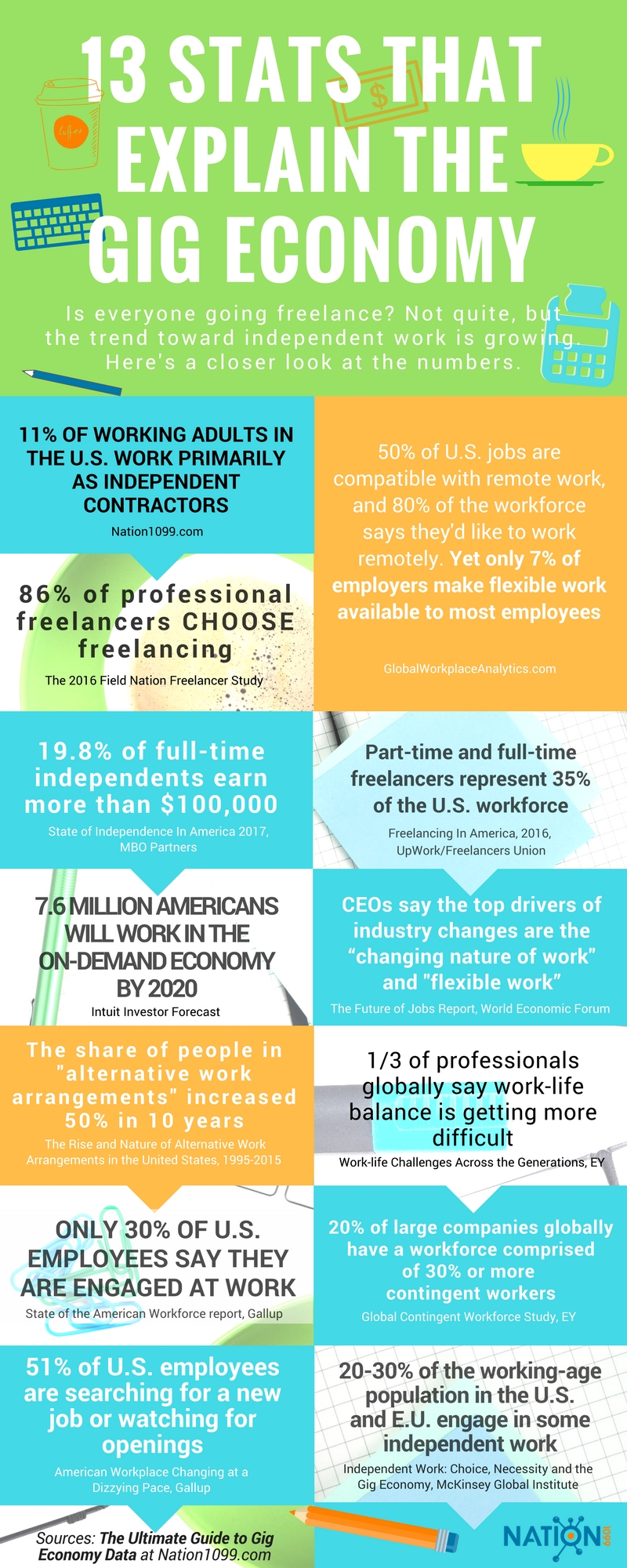Your Single Biggest Competition for Talent Isn’t a Competitor Company – It’s Self Employment

Having trouble recruiting talented professionals? The best place to look may not be at competing companies but among the growing freelance workforce.
My colleagues and I at Nation1099 recently conducted a literature review of studies and surveys regarding the gig economy and freelancing, the highlights of which are summarized in the infographic below. Collectively, this data documents an astounding growth in freelancing among knowledge workers. It also highlights how much the growth in freelancing is driven by workplace conditions.
Where yesterday’s freelancers may have been driven by unemployment, today’s freelancers are no longer “between jobs.” The majority say they strongly prefer freelancing to traditional employment, citing low engagement at work, a lack of work/life balance, and no meaningful mission as the main reasons they go solo.
For example, the 2016 version of the annual Upwork/Freelancers Union “Freelancing In America” survey found that 79 percent of freelance workers say freelancing is better than working in a traditional job. The survey also found freelancers are more likely to feel engaged, respected, empowered, and excited by their work.
Even in cases where unemployment pushed people reluctantly into freelancing, new employment opportunities aren’t drawing them back to the traditional workforce. The “State of Independence in America 2017” survey from MBO Partners found that while the Great Recession increased the number of freelancers, the recovery hasn’t inspired a rush back into the workplace: “Most independents say they plan to continue to stay the course as an independent or even build a bigger business.”
About a third of the U.S. workforce participates in the gig economy in some way. When we subtract part-time freelancers and moonlighters, we estimate that 11 percent of the workforce is full-time freelance. Several of the studies we looked at predict a continued upward trend supported by the growth of specialized marketplaces for consultants and a growing comfort with remote work.
What does that mean for you as a recruiter or employer seeking hard-to-find talent? For one, it means that your overall talent strategy needs to account for onboarding, engaging, managing, and communicating with freelancers. They will inevitably be a critical share of your overall workforce.
It the meantime, it’s interesting to note how much of the talent pool freelancing has captured. If no single employer dominates your industry and gobbles up more than 11 percent of the workforce, that means your single biggest competition for talent isn’t an employer at all. It’s self employment.

Robert McGuire owns McGuire Editorial content marketing agency and is the publisher of Nation1099, a forum for professional freelancers working to grow their gig economy businesses.

